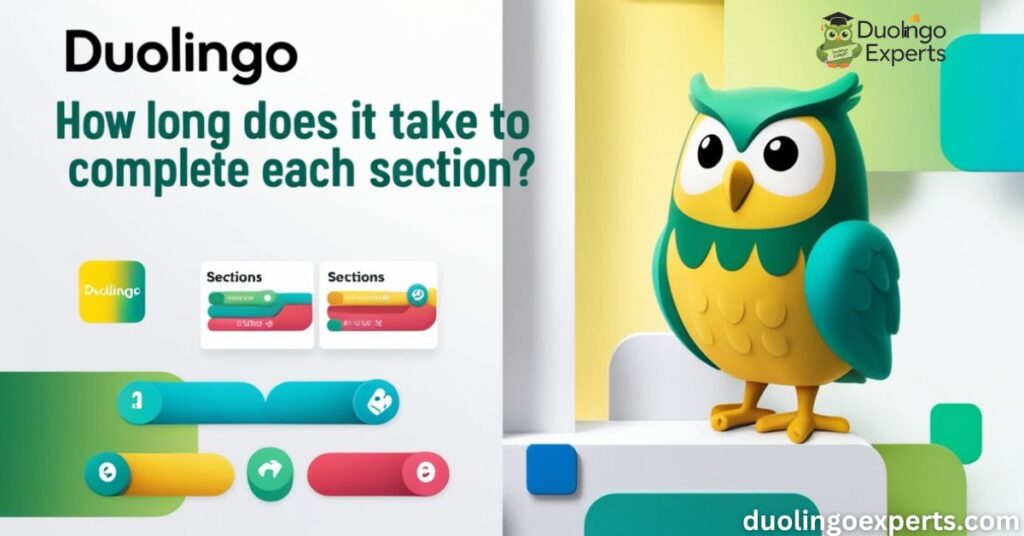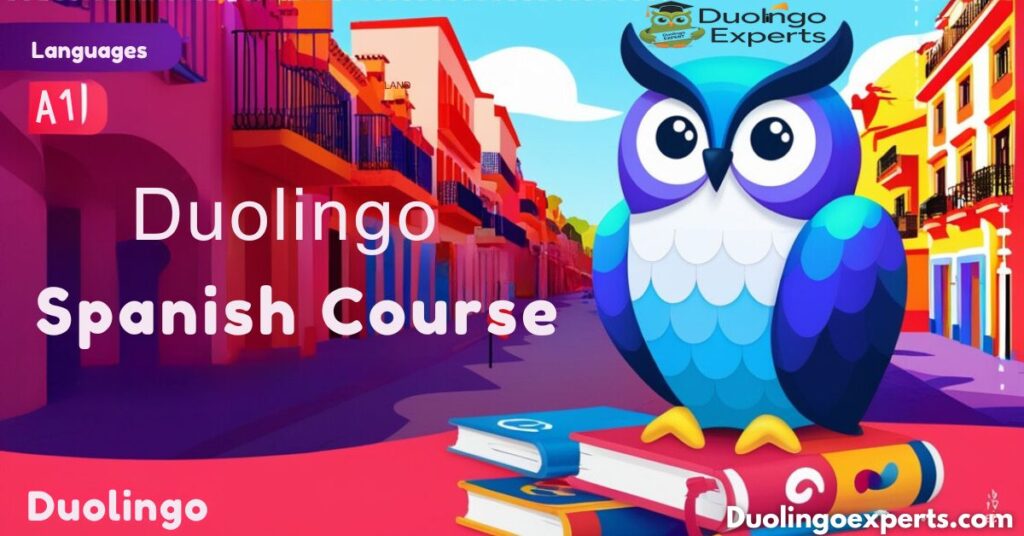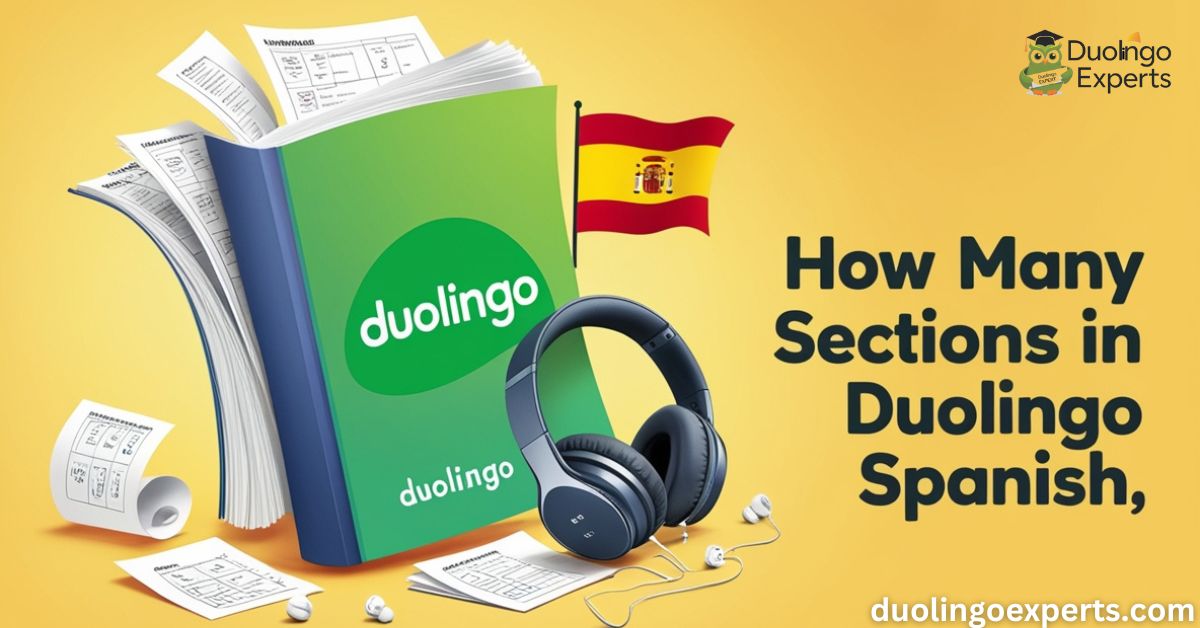Are you thinking about learning Spanish using Duolingo, but wondering just how many sections there are in the Duolingo Spanish course? Understanding the course structure is key to knowing how your language learning journey will unfold. With Duolingo’s gamified approach and a well-structured course layout, you can take your Spanish skills from beginner to advanced. But first, let’s dive into exactly how the course is organized and what you can expect from each section.
In this comprehensive guide, we’ll answer the question “How many sections are in Duolingo Spanish?”, break down the structure of the course, explain what each section entails, and offer insights into how Duolingo aligns with CEFR proficiency levels. We’ll also provide tips and strategies for making the most of your Duolingo Spanish course, with the ultimate goal of boosting your Spanish language skills.
Key Takeaways
- Duolingo’s Spanish course is divided into 8 sections, ranging from beginner to advanced levels.
- Each section contains units that cover specific vocabulary, grammar, and conversational topics.
- Interactive features, like stories, podcasts, and audio lessons, enhance learning and help reinforce material.
- Duolingo Spanish sections align with the CEFR, guiding you from A1 (beginner) to B2 (upper-intermediate) levels.
Understanding Duolingo’s Spanish Course Structure
Before diving into how many sections are in Duolingo Spanish, it’s important to understand the structure of the course itself. Duolingo is designed to be self-paced and allows learners to track their progress easily. The course is broken down into sections, units, and lessons that each target specific aspects of Spanish language skills such as vocabulary, grammar, speaking, and listening comprehension.
Here’s how Duolingo organizes the Spanish course:
- Sections: These are major milestones that group related topics together. Each section represents a broad stage in your learning journey, ranging from basic vocabulary and grammar to more complex language structures.
- Units: Inside each section, Duolingo offers smaller units that focus on specific language concepts like verb conjugation, sentence structure, or real-world conversations.
- Lessons: The individual lessons within each unit focus on particular activities that help reinforce your understanding of the topic. These can include multiple-choice exercises, translation activities, matching tasks, and speaking exercises.
The overall Duolingo Spanish course is divided into 8 sections, each offering a unique set of challenges that take you through the basics of the language to more complex material. Let’s take a closer look at these sections.
What Are Sections in Duolingo?
A section in Duolingo is essentially a collection of units that focus on a set of related topics. These sections guide you through the language, ensuring that you build Spanish proficiency gradually and steadily. Duolingo uses a progression system where you must complete one section before moving to the next.
Each Duolingo Spanish section has its own set of skills to master, and while they vary in content, they all aim to prepare you for the next level. These sections are designed for learners at different stages in their journey, so you’ll be progressing through more complex grammar and vocabulary as you go along.
Duolingo Spanish sections and Units
Duolingo’s Spanish course is divided into 8 main sections, each covering a range of topics from beginner to advanced levels. Each section is further broken down into units, which focus on specific language skills like vocabulary, grammar, and conversation practice.

The sections guide learners through interactive lessons, reinforcing key concepts with exercises that cover reading, speaking, and listening. This structure ensures a well-rounded learning experience, allowing learners to progress at their own pace while mastering essential Spanish language skills.
The Role of Units and Lessons Within Sections
Within each Duolingo Spanish section, the content is divided into smaller pieces: units and lessons.
- Units are designed to focus on specific themes or language structures. For example, one unit might be dedicated to present tense verbs, while another might focus on food vocabulary.
- Lessons within each unit are the core of the learning experience. These lessons might include writing tasks, listening exercises, matching vocabulary words to their meanings, or translating sentences.
The units and lessons together provide a dynamic and interactive learning experience. For instance, after learning about regular verbs in the present tense in one unit, you might use that knowledge in the next unit to hold a conversation in Spanish.
How Many Sections Are There in Duolingo Spanish?
Now, let’s get to the heart of the matter: How many sections are in Duolingo Spanish? As of 2024, the Duolingo Spanish course contains 8 main sections. Here’s a breakdown of each section, starting from the beginner level and moving up to more advanced material.
1. Rookie
The Rookie section is where you begin your Spanish learning journey. This section introduces you to basic vocabulary such as numbers, colors, greetings, and simple nouns and verbs. The focus is on beginner Spanish topics, and you’ll spend a lot of time getting comfortable with the present tense.
Key Topics:
- Greetings and introductions
- Basic nouns (e.g., colors, numbers)
- Simple verbs (e.g., ser, tener)
- Essential phrases (e.g., “¿Cómo estás?”, “Hola”)
2. Explorer
The Explorer section starts to expand your knowledge beyond the basics. It includes more complex grammar and introduces possessive adjectives and irregular verbs. By the end of this section, you should have a solid foundation in basic sentence structure.
Key Topics:
- Possessive adjectives (e.g., mi, tu, su)
- Introduction to regular and irregular verbs in present tense
- Expanded vocabulary related to daily life (e.g., family, food, animals)
3. Traveler
In the Traveler section, Duolingo begins to introduce real-world conversations. You’ll learn how to talk about traveling, asking for directions, ordering food at restaurants, and discussing transportation. Spanish conversation practice becomes more important.
Key Topics:
- Travel vocabulary (e.g., transportation, directions)
- Ordering food and drinks
- Using regular verbs in different contexts
4. Trailblazer
The Trailblazer section introduces you to the preterite tense, allowing you to discuss actions that happened in the past. You’ll also explore reflexive verbs, which are used in everyday routines.
Key Topics:
- Preterite tense: Expressing past actions
- Reflexive verbs (e.g., levantarse, ducharse)
- Descriptions of past events
5. Adventurer
The Adventurer section focuses on the imperfect tense, allowing you to discuss past events that were ongoing or habitual. You’ll also learn how to express preferences, opinions, and talk about desires using verbs like gustar.
Key Topics:
- Imperfect tense: Describing ongoing actions in the past
- Talking about preferences and desires (e.g., gustar, querer)
- Intermediate vocabulary and sentence structures
6. Discoverer
In the Discoverer section, you’ll start learning advanced grammar concepts like the subjunctive mood. This mood allows you to express doubts, wishes, and hypothetical situations, which is essential for advanced Spanish.
Key Topics:
- The subjunctive mood: Expressing desires, doubts, and hypotheticals
- Indirect object pronouns
- More complex sentence structures
7. Challenger
The Challenger section aims to refine your command of the language, introducing future tenses and conditional phrases. You’ll practice talking about what might happen and what you would do in different situations.
Key Topics:
- Future tense and conditional tense (e.g., haría, viviría)
- Hypothetical statements and expressing future plans
8. Navigator
The final section, Navigator, consolidates all the concepts you’ve learned. It’s designed to help you practice Spanish at an advanced level, focusing on nuances of the language, idiomatic expressions, and complex grammar.
Key Topics:
- Idiomatic expressions (e.g., estar en las nubes, tirar la toalla)
- Mastery of all verb tenses (e.g., subjunctive, future, conditional)
- Full fluency in Spanish conversations
How Long Does It Take to Complete Each Section?

Now that you know how many sections are in Duolingo Spanish, you might be wondering how long it will take you to complete each section. The answer depends on several factors:
1. Consistency and Frequency
If you study daily, even for 10-15 minutes, you can expect to complete a section in 3-4 weeks. Duolingo’s daily practice feature helps you build momentum, and the streak counter can be a fun motivator to keep you consistent.
2. Your Learning Speed
Some people pick up Spanish grammar and vocabulary faster than others. If you’re already familiar with a Romance language like French or Italian, you might progress more quickly through certain sections.
3. Section Complexity
Naturally, some sections take longer than others. Sections like Rookie and Explorer are designed to help you grasp the basics, while Challenger and Navigator require more in-depth study due to their focus on advanced concepts
Tips for Efficient Section Completion
If you want to progress quickly through Duolingo Spanish sections, here are some tips to speed up your language learning without sacrificing quality:
Duolingo Spanish Course and CEFR Alignment

Duolingo Spanish sections are aligned with the CEFR (Common European Framework of Reference for Languages), which is the international standard for measuring language proficiency. The CEFR has six levels, ranging from A1 (beginner) to C2 (proficient).
Duolingo’s Spanish Progress and CEFR Levels
- A1-A2 (Beginner): Found in sections like Rookie, Explorer, and Traveler.
- B1-B2 (Intermediate): Found in sections like Trailblazer, Adventurer, and Discoverer.
- C1 (Advanced): Found in Challenger and Navigator sections, focusing on advanced grammar and conversation skills.
By the time you finish Duolingo’s Spanish course, you should be well on your way to reaching a B2 (upper-intermediate) level of proficiency, with the skills needed for real-world Spanish conversations.
Comparing Duolingo Spanish Sections to Traditional Learning Methods
One of the big advantages of using Duolingo is its ability to combine the best features of language learning apps and traditional classroom learning. While classroom learning focuses heavily on structured lessons, Duolingo’s gamification elements make the process more engaging.
Duolingo vs. Classroom Learning
- Duolingo: Self-paced, on-the-go, interactive, and fun. Great for those who need flexibility.
- Classroom Learning: More structured, but it can be slower and less interactive.
Other Language Learning Apps vs. Duolingo
Offers duolingo more interactive features like stories, podcasts, and audio lessons than other apps. Its focus on speaking practice and gamification gives it an edge in terms of engagement.
Frequently Asked Questions
How any sections in Duolingo English?
The Duolingo English course consists of 6 main sections, each focusing on different language skills, from basic vocabulary to more advanced grammar. These sections help learners gradually improve their English proficiency through interactive lessons and exercises.
How many sections in Duolingo German?
The Duolingo German course includes 7 main sections, covering everything from basic vocabulary to more complex grammar and sentence structures. Each section is designed to progressively enhance your German language skills through interactive lessons and practice.
How many sections in Duolingo French?
The Duolingo French course has 8 main sections, each designed to teach essential vocabulary, grammar, and conversational skills. These sections help learners progress from basic to advanced French proficiency through engaging lessons and practice exercises.
How many sections in Duolingo Spanish 2024?
The Duolingo Spanish course in 2024 consists of 8 main sections, ranging from beginner to advanced levels. These sections cover essential Spanish vocabulary, grammar, and conversation skills, helping learners progress at their own pace.
How many sections are there in Duolingo Spanish?
There are 8 sections in Duolingo Spanish, designed to guide learners from beginner to advanced levels. Each section focuses on different aspects of Spanish language skills, including vocabulary, grammar, and speaking practice.
How many sections in Duolingo Portuguese?
The Duolingo Portuguese course has 6 main sections, each designed to build skills in vocabulary, grammar, and conversation. These sections help learners progress from beginner to intermediate proficiency in Portuguese.
How long is section 4 of Spanish Duolingo?
Section 4 of the Duolingo Spanish course typically takes around 3-5 hours to complete. It covers intermediate-level topics, including more complex grammar and vocabulary.
Conclusion
Duolingo Spanish sections guide learners through a well-structured, engaging journey that takes you from the basics to advanced proficiency. With 8 distinct sections, each focusing on different aspects of Spanish language skills, you’ll build a solid foundation and advance your understanding of grammar, vocabulary, and conversation.
Whether you’re a beginner or intermediate learner, Duolingo’s interactive features like stories, podcasts, and audio lessons provide plenty of opportunities for practice. Consistent daily practice will help you reach fluency faster while keeping the learning process fun and rewarding.
By the time you’ve completed all 8 sections, you’ll be well on your way to mastering Spanish, confident enough to handle real-world conversations, and have a deeper understanding of the language’s complexities. Happy learning!
>>>Read Also: Step by Step Guide on How to Get Duolingo Max Fast!

DuolingoExperts, managed by MarkJohan, offers expert insights and tips for mastering languages. A tech-driven platform to enhance your learning experience.

